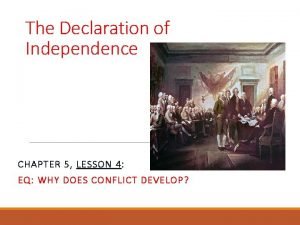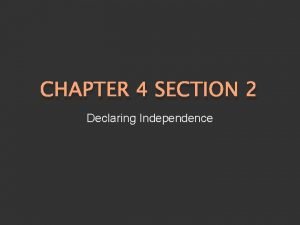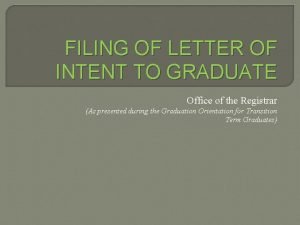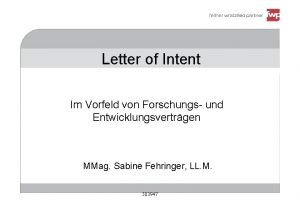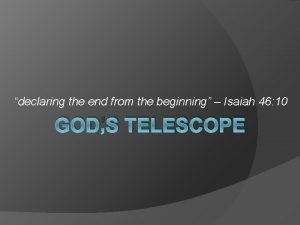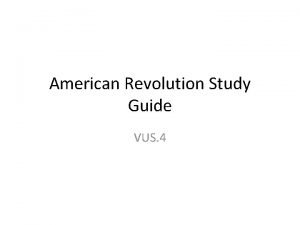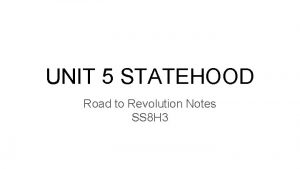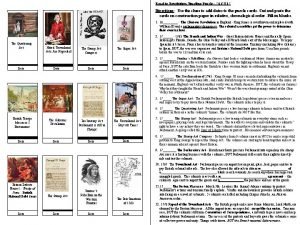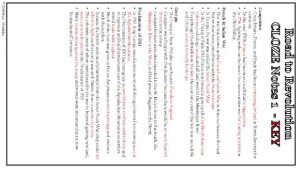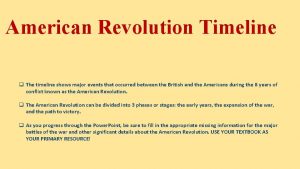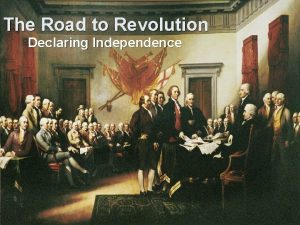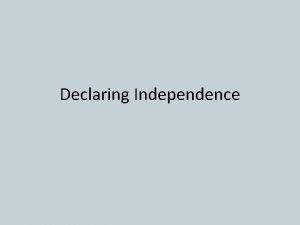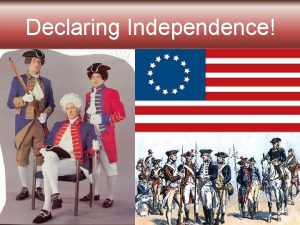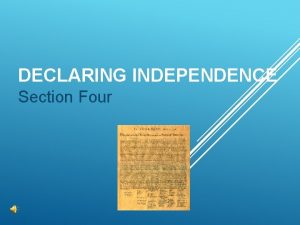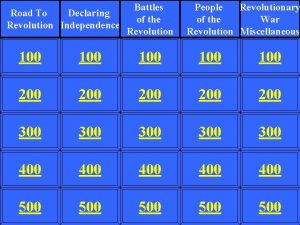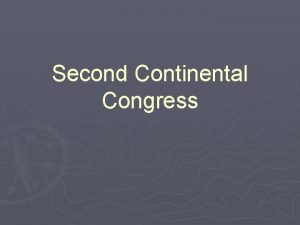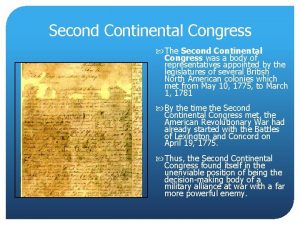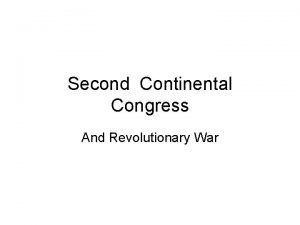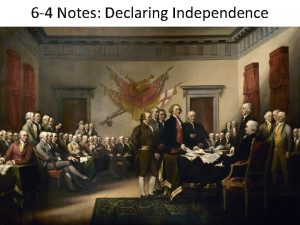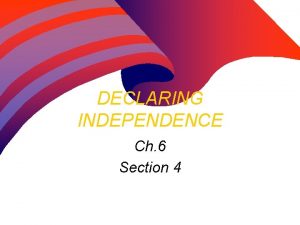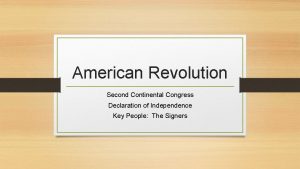The Road to Revolution Declaring Independence Second Continental














- Slides: 14

The Road to Revolution Declaring Independence

Second Continental Congress § Met in Philadelphia beginning in May 1775 § Formed Continental Army • Washington chosen to lead § Washington showed up in his military uniform § Tallest man at convention – he looked the part § Authorized printing of paper money to pay troops § Representatives to the meeting were beginning to act like a government



Offering an Olive Branch • July 1775 Moderate members of the congress drafted the Olive Branch Petition – Asked the King to restore harmony between England the colonies • The king rejected the offer and sought new ways to punish the colonies – Blocked colonial ports and hired German Hessians to fight in colonies

Thomas Paine’s “Common Sense” • In 1776 most colonists wanted to avoid complete break with England • Paine ridiculed the “Divine Right of Kings” and disagreed with economic reasons for remaining with England • Common Sense caused more colonists to embrace the idea of independence from England

Declaring Independence • May 1776 Second Continental Congress adopted resolution authorizing each colony to create its own government • Richard Henry Lee (VA) introduced a resolution saying that the colonies “are and of right, ought to be free and independent states” • Appointed a committee to draft a declaration of independence

Committee that drafted the Declaration Benjamin Franklin John Adams Robert Livingston Thomas Jefferson John Roger. Adams Sherman

The Writing of the Declaration of Independence

• Thomas Jefferson was chosen to write the declaration – Excellent writer – From Virginia Declaring Independence • Based on Natural Rights philosophy of John Locke • “Unalienable Rights” – Life, liberty, and pursuit of happiness • July 4, 1776 – Congress adopted the Declaration of Independence • John Hancock, president of the congress was the first to sign

The Declaration in Five Parts • Preamble – “When in the Course of Human events…” • The Rights of the People – “…We hold these truths to be self evident…” • List of Grievances – “…He has refused his assent to laws…for the public good…” • Efforts to avoid separation – “…We have petitioned for a redress of grievances in the most humblest terms…” • Independence Declared – “…These united colonies are, of right ought to be free and independent states…”

Know this date!

Historical Debate – Were colonial leaders motivated by selfish or ideological reasons? • Ideological - the body of doctrine, myth, belief, etc. , that guides an individual, social movement, institution, class, or large group What could some examples of selfish reasons be? What could some examples of ideological reasons be?

Quickwrite #5 • I believe the colonial leaders were motivated by selfish/ideological reasons because. . .
 Chapter 5 lesson 4 declaring independence
Chapter 5 lesson 4 declaring independence Chapter 4 section 2 declaring independence
Chapter 4 section 2 declaring independence Convergent divergent transform
Convergent divergent transform Convergent plate boundary
Convergent plate boundary Graduation fee breakdown
Graduation fee breakdown Metaphor poems for kids
Metaphor poems for kids Come let us sing a song a song declaring we belong to jesus
Come let us sing a song a song declaring we belong to jesus Lol declaring intent
Lol declaring intent Declaring the end from the beginning
Declaring the end from the beginning What is paved and unpaved road
What is paved and unpaved road Road to revolution study guide answer key
Road to revolution study guide answer key Road to revolution cloze notes 2
Road to revolution cloze notes 2 Road to revolution timeline answers
Road to revolution timeline answers American revolution cloze notes
American revolution cloze notes Road to american revolution timeline
Road to american revolution timeline
